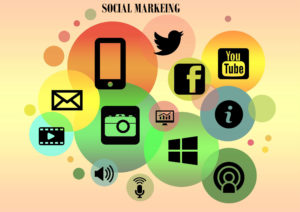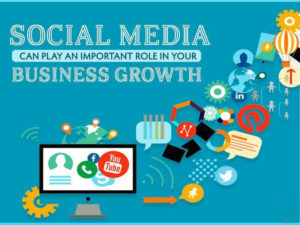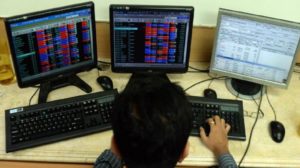9999710635 – Online Digital marketing courses in Muzaffarnagar- Digital marketing Training institute in Muzaffarnagar, Uttar Pradesh
Online Digital marketing courses in Muzaffarnagar- Digital marketing Training institute in Muzaffarnagar, Uttar Pradesh
Perhaps it is because I have crossed over from traditional to digital marketing and media communications, but I am often flabbergasted when I hear people from various backgrounds speak about Social Media and show no sense that they really understand how revolutionary it is.
I live near Silicon Valley and have interacted with the tech community since the 1980’s during the era of software duplication, into the 90’s and the dot-com boom, and now into the age of maturation of the “Interwebs”. Because of my positions I have communicated with people from diverse walks of life and economic and educational backgrounds, and come to a startling discovery: very few people truly understand what Social Media means, how to use it, its historical significance, and its impact on business.
I have had college educated people tell me that it is “just a fad”, programmers admit point-blank that “I just don’t understand Social Media”, just this week I was in a presentation by several experts in the field who were basically lecturing on Marketing 101 and how it applies to Facebook, Twitter, and LinkedIn, rather than approaching the topic with any kind of depth. Sandy Carter, author and VP of Marketing for IBM once told me that she has had conversations with CEO’s and Board of Director members who “decided to opt-out of Social Media”. She, rightly observed, along with many other significant members of the conference professionals, that there is no such thing: conversations are occurring, and will continue to occur whether you participate or not. To “opt-out” in any way, shape, or form, is to abdicate control of your brand to the REAL masses in media: the social channels.
Social Media participants, for the most part, are young and have grown up with it. They know how to use it, but cannot imagine a world in which it did not exist. Nor can they understand the difference in impact it has had on the world from a pre- to post-Social Media universe.
As for the older generation, I found one post immensely incredulous from a would-be Social Media Expert “Where can I get a crash course on Social Media?”
My response: “there is no such thing.”
This statement shows an innate ignorance of the medium. Social Media should be an integrated process. It is an expression of a marketing strategy and business persona and mission statement. For anyone that treats it as a separate appendage does not understand it. It does not stand-alone in a vacuum. It is innately a communication channel that demands interactivity, engagement and two-way communications.
It is not a fad. Why? Because this is the evolution of communications, spurred by technology. From the down of humanity until now, businesses and organizations have had a one-way communication channel. Mass media allowed institutions with power, money and a message to have access to broadcast media and dictated messages to the rest of the world. What Social Media had done, is to turn each individual into their own broadcast station. Now people have feedback. They have channels. Whereas before Social Media they could only talk to a small group at a time about their experiences with a group, company, or institution, now, with a few keystrokes and the click of a button, they have instant access to hundreds and even thousands of people with whom they have a relationship and some credibility. That gives the individual an unprecedented level of influence for the first time in history. On a par with, and sometimes even exceeding the influence of, the original entity’s message.
Mass media has now become bi-directional. There is instant feedback. There is instant spin and criticism or endorsement. Individuals are finding their voice and power and communicating.
If you doubt this, just look at the Arab Spring phenomenon. Countries and rulers that had been in power for a generation suddenly toppled because people could finally communicate with each other in large groups. In Egypt they even referred to it as “The Facebook Revolution”.
This is the democratization of communications.
It is the equivalent of the French Revolution for Mass Media.
Businesses are now faced with an “engage or perish” scenario. Not only are they obligated to engage, but also to handle feedback in real-time. There is no longer a monopoly on media and a uni-directional, dictatorial message traveling through a megaphone, but rather there are now megaphones on both sides of the conversation.
But it doesn’t have to be that way.
Consumer expectations and demand for service and fairness are increasing. If a company engages well, they can keep the conversation to a whisper and amicably resolve any concerns or complaints. But, should that process not occur, the customer have that megaphone at the ready, and a legion of sympathetic audience members at the stand-by.
This is why Social Media is a game changer. This is why it is not a fad. This is why it is literally, revolutionary and must be acknowledged and handled as such.
Also, from a business standpoint, Public Relations not longer exists as the discipline it was. Social Media undermines that message and changes the nature of the field of engagement.
Also, senior management needs to understand; there is no “going rogue” on Social Media.
Social Media is solely the responsibility of the Marketing department and a part of branding and brand protection and reputation management. Any member of an organization participating in Social Media, out of imperative, is subordinate to the Marketing message. With one bad Tweet, one poorly crafted Facebook post, one misstep on LinkedIn, Instagram or any number of hundreds of sites and a senior manager or board member can destroy millions of dollars of brand development, millions in marketing efforts, millions in potential goodwill and future business, at risk.
Social Media is a powerful tool. And like any tool can be used for constructive or destructive purposes but it has to be used in the hands of those who truly understand its power. Those who are skilled at using such tools and use them well. It is the Sword of Damocles of the 21st century.
Of course, there is always the possibility of misuse on both sides, and the public at large needs to also learn the lessons that The Media have learned through Journalism, marketing and Advertising best practices over the decades, and the beginnings and results of that evolution remain to be seen.
Get Touch With Us :: www.aosindia.net
Email :: aos.inquiry@gmail.com
Contact Number :: 09999710635







